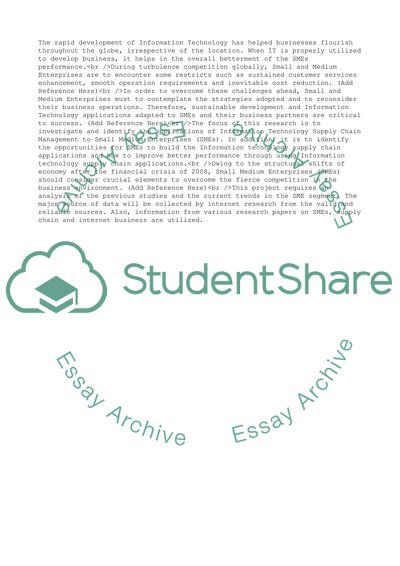Cite this document
(Analysis of the Application of Information Technology SCM to SMEs Research Paper, n.d.)
Analysis of the Application of Information Technology SCM to SMEs Research Paper. https://studentshare.org/business/1724156-analysis-of-the-application-of-information-technology-supply-chain-management-to-small-medium-enterprises-smes
Analysis of the Application of Information Technology SCM to SMEs Research Paper. https://studentshare.org/business/1724156-analysis-of-the-application-of-information-technology-supply-chain-management-to-small-medium-enterprises-smes
(Analysis of the Application of Information Technology SCM to SMEs Research Paper)
Analysis of the Application of Information Technology SCM to SMEs Research Paper. https://studentshare.org/business/1724156-analysis-of-the-application-of-information-technology-supply-chain-management-to-small-medium-enterprises-smes.
Analysis of the Application of Information Technology SCM to SMEs Research Paper. https://studentshare.org/business/1724156-analysis-of-the-application-of-information-technology-supply-chain-management-to-small-medium-enterprises-smes.
“Analysis of the Application of Information Technology SCM to SMEs Research Paper”. https://studentshare.org/business/1724156-analysis-of-the-application-of-information-technology-supply-chain-management-to-small-medium-enterprises-smes.


